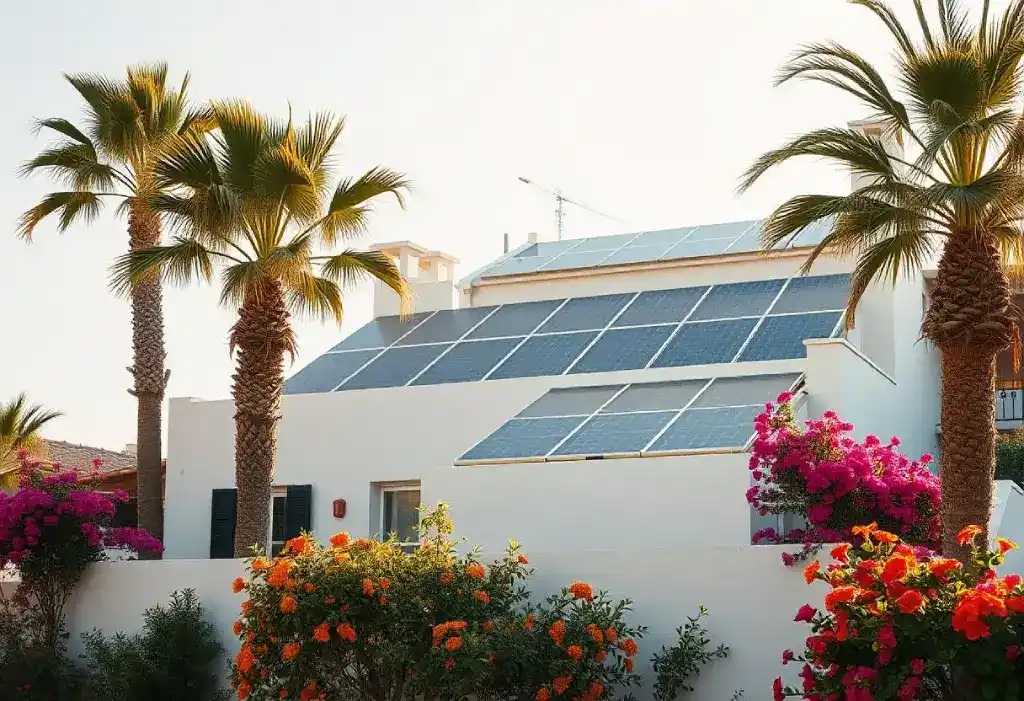Traditional Construction vs. Sustainable Construction
When starting a construction project, one of the most important decisions is choosing between traditional and sustainable construction. This choice not only influences the budget and project timelines but also affects the environmental impact and energy efficiency of the future home or building. In this article, RialtoSur will help you analyze the key differences between both construction methodologies.
Sustainability is rapidly gaining ground in the construction sector, driven by growing awareness of the climate crisis. Innovation in this field is offering promising alternatives to traditional practices, seeking a more harmonious balance between construction and the environment. This approach emphasizes the importance of considering not only immediate costs but also long-term benefits for the planet and future generations.
Differences Between Traditional and Sustainable Construction
Choosing between traditional and sustainable methods is crucial, as it impacts both the development of the project and its long-term environmental footprint. Traditional construction has been the norm for decades, known for its speed of execution and lower initial cost. However, over time, this approach can lead to high expenses, particularly in terms of energy consumption and ongoing maintenance.
On the other hand, sustainable construction has emerged as a response to the growing demand for buildings that respect the environment and integrate harmoniously with it. While the initial investment may be higher, the long-term benefits are significant, both economically and environmentally. This approach not only promotes sustainability but also offers lasting economic advantages, making it an increasingly attractive option for construction projects.
What is Sustainable Construction and Why is it Important?
Sustainable construction has emerged as a key paradigm in the sector, proposing an approach that goes beyond creating safe and aesthetically pleasing structures. It is a philosophy that seeks to integrate buildings harmoniously with their environment, optimizing resource use and creating healthy spaces for occupants.
But what does it mean to build sustainably? Essentially, sustainable construction promotes the adoption of practices that minimize environmental impact. This is achieved through the use of eco-friendly materials, optimizing energy consumption, efficient water management, and reducing waste during construction and throughout the building’s life cycle.
The importance of sustainable construction lies in its ability to mitigate current environmental challenges. By reducing the demand for natural resources and minimizing waste generation, this approach helps fight climate change and promotes environmental conservation. Additionally, sustainable buildings offer better thermal, acoustic, and visual comfort, creating healthier and more pleasant environments for living or working. The energy efficiency inherent in this type of construction also reduces operating costs, resulting in long-term economic savings.
Sustainable construction not only aligns with emerging values of environmental responsibility but also promotes social well-being. Choosing this approach is not only a smart investment but also a step toward a more responsible and sustainable future.
Advantages of Sustainable Construction
Opting for sustainable construction reflects a commitment to the environment and offers several benefits for both property owners and building occupants. Below are some of its key advantages:
- Energy Efficiency: Reduces energy consumption through optimized architectural design, the use of effective insulating materials, and the integration of renewable energy technologies such as solar panels and geothermal heating systems.
- Reduced Operating Costs: Energy efficiency lowers costs associated with heating, cooling, and lighting, leading to long-term economic savings.
- Improved Indoor Air Quality: The use of low-emission materials and advanced ventilation systems improves indoor air quality, benefiting occupants’ health.
- Increased Resale Value: Sustainable buildings tend to have higher market value due to their energy efficiency and lower operating costs.
- Lower Environmental Impact: By reducing natural resource consumption and minimizing waste, sustainable construction reduces its environmental footprint.
- Contribution to Combating Climate Change: Reducing greenhouse gas emissions through better energy efficiency and the use of renewable energy helps mitigate climate change.
- Compliance with Environmental Regulations: Facilitates adaptation to increasingly stringent environmental regulations, avoiding penalties and improving the project’s or company’s reputation.
- Encouragement of Innovation: Sustainable construction fosters innovation in design and execution, promoting the adoption of new techniques, materials, and technologies that benefit the sector as a whole.
Innovation in Sustainable Construction
Technological innovation has been key in advancing sustainable construction, driving the development of new techniques, materials, and tools that have transformed the industry. Below are some of the main innovations:
- Integrated Renewable Energy: Technologies such as photovoltaic solar panels and geothermal heating systems improve energy efficiency, driving the transition toward net-zero buildings that consume little energy while generating more than they use.
- Cutting-edge Sustainable Materials: The production of low-impact, high-efficiency materials, such as permeable concrete and eco-friendly insulation, reduces the carbon footprint and promotes the circular economy.
- Advanced Design Software: Tools like Building Information Modeling (BIM) and energy simulation software allow the design of more efficient buildings from the early stages of the project, optimizing energy consumption.
- Smart Management Systems: Automation and resource management systems for energy and water optimize building operations, contributing to greater operational efficiency and comfort.
- Modular and Prefabricated Construction: The manufacture of components in a controlled environment for later assembly on-site reduces construction time and minimizes waste.
- Green Standards and Certifications: Regulations and certifications promoting sustainable construction set standards for evaluating and improving the environmental performance of buildings.
The Future of Sustainable vs. Conventional Construction
The future of sustainable construction is promising. With growing environmental awareness and stricter regulatory frameworks, more people are opting for sustainable solutions. As technology continues to advance, innovations are emerging that make it easier to adopt sustainable construction, creating healthier and more responsible environments.
In the face of the climate crisis, sustainable construction emerges as a viable and responsible option. At RialtoSur, we are committed to these practices, offering eco-friendly and customized solutions that meet the needs and expectations of our clients. Those planning to build their home or building should consider sustainable construction as a key option for a more responsible and efficient future.
